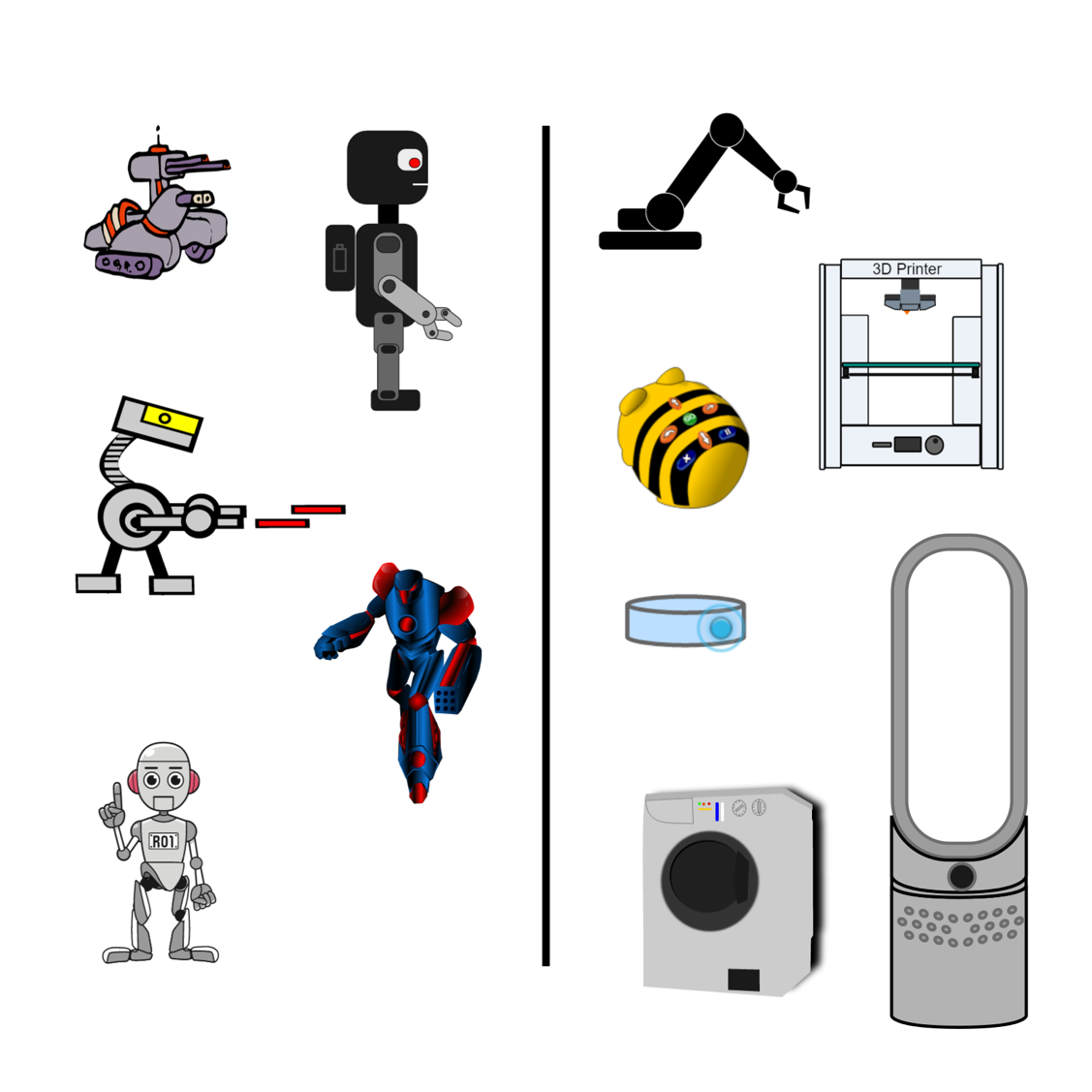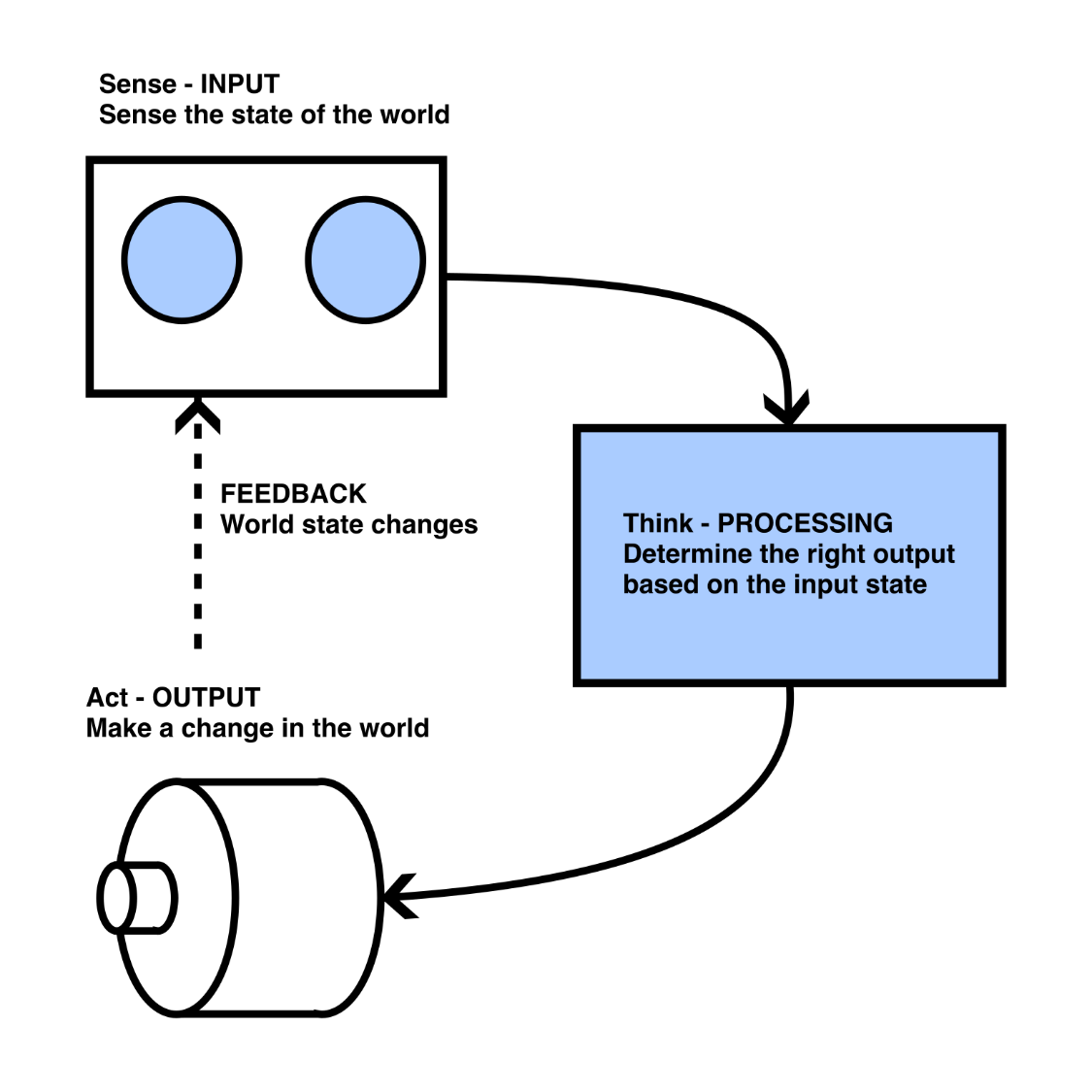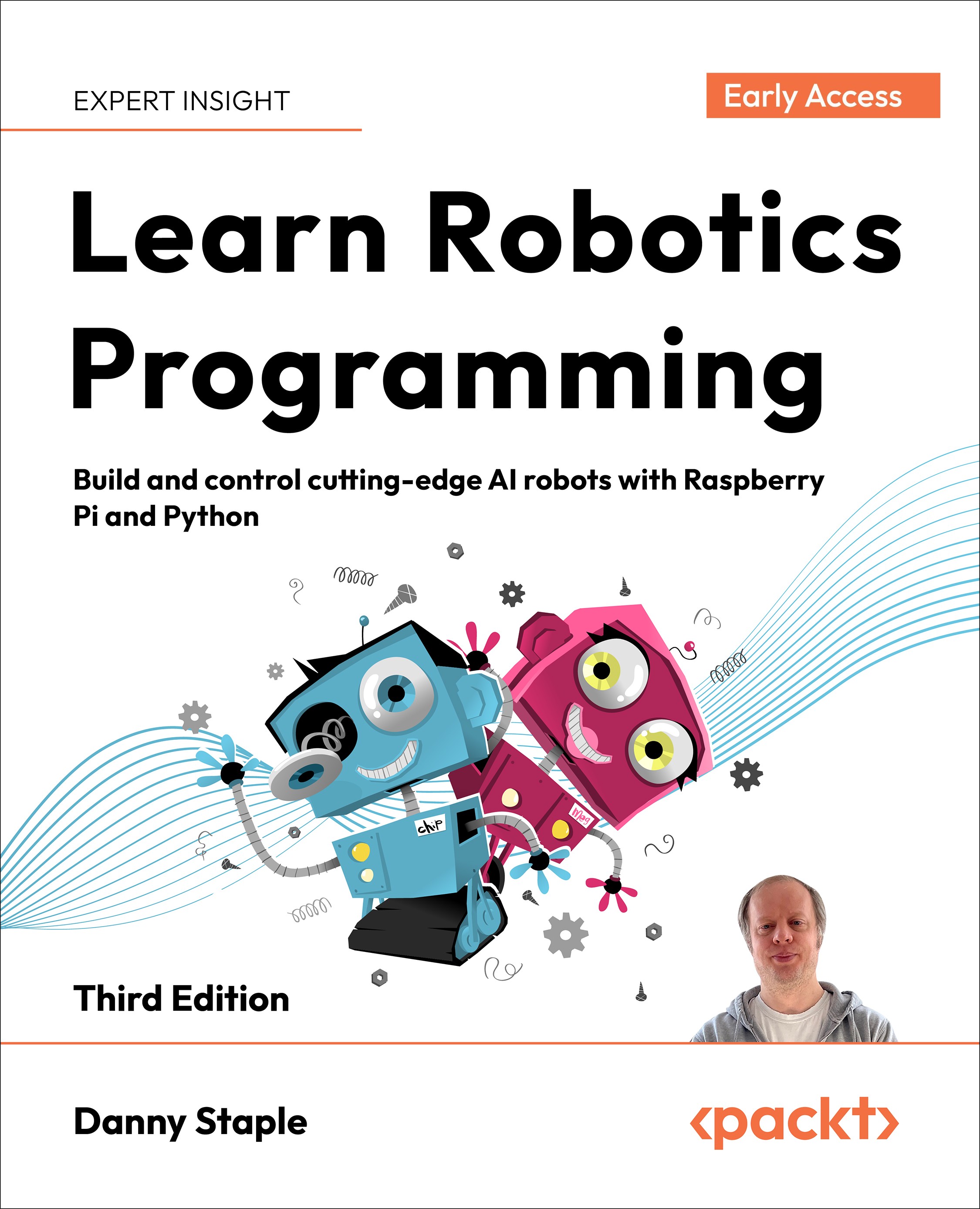What does the word robot mean?
This word robot comes from science fiction and is derived from the Czech word for slave. Robot was first used in the 1921 Karel Capek play, Rossum's Universal Robots. The science fiction author Isaac Asimov coined the word robotics as he explored intelligent robot behavior.In modern terms, a robot is a machine that makes autonomous decisions based on input from sensors. A software agent is a program that automatically processes input and produces output. A system is autonomous when it doesn’t need to be guided or driven by a human to perform a task.Perhaps a robot is best described as an autonomous software agent with sensors and moving outputs, or it could be described as an electromechanical platform with software running on it. Either way, a robot requires electronics, mechanical parts, and code. Let’s have a look at some robots:

The preceding picture shows science fiction and real-world robots. Images used are my own or from the public domain OpenClipArt library.The word robot conjures up images of fantastic sci-fi creations like those on the left of Figure 1.1, devices with great strength and intelligence. These often follow the human body plan, making them an android, a human-like robot. They're often given a personality and behave a little like a person or a pet.The right of Figure 1.1 shows real robots, in our homes and industries. Most do not stand on two legs, or indeed have any legs at all. Some are on wheels, and some are not mobile but still have moving parts and sensors.Robots such as modern washing machines, autonomous vacuum cleaners, and air sampling fans have infiltrated our homes and are part of everyday life. They aren’t threatening and have become just another machine around us. The 3D printer, robot arm, and learning toys are a bit more exciting, though.A robot can be simplified and deconstructed, as shown in the following diagram:

At their core, robots can all be simplified down to:
- inputs to sense with such as a distance sensor.
- a controller to think, running code and making decisions.
- outputs to act on the environment such as a motor.
When outputs change the environment, this will form a feedback loop, going around to the sense stage again reflecting the consequences of the act stage.Now, you’ve got an idea of the basic parts of a robot. Let’s use this as a way to look at the real robots in the next upcoming section.




























































